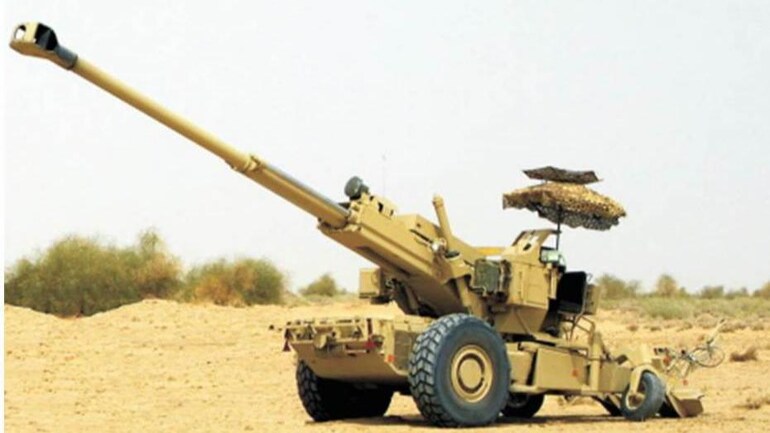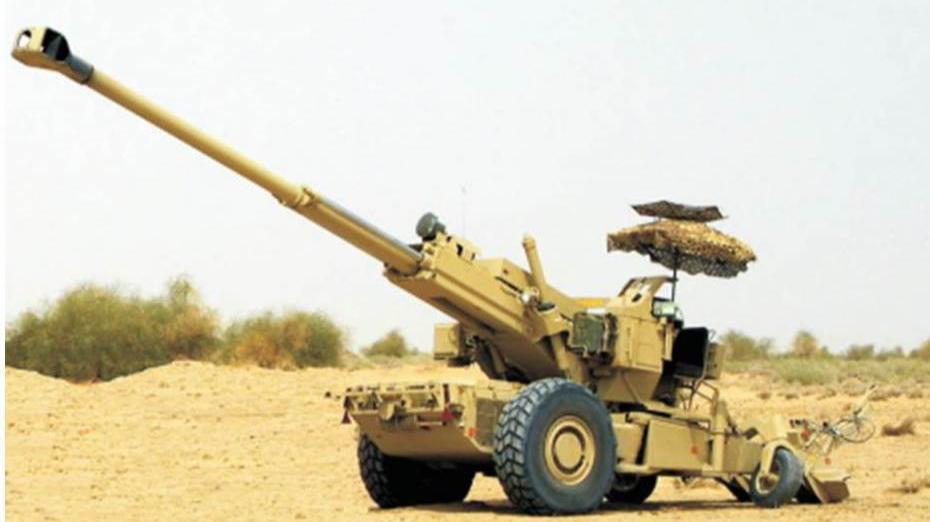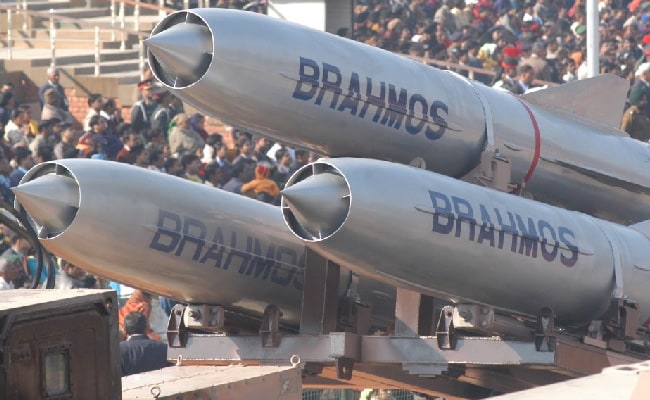You are using an out of date browser. It may not display this or other websites correctly.
You should upgrade or use an alternative browser.
You should upgrade or use an alternative browser.
@Nilgiri
I don't know how to do this - can you help combine the Kargil threads?
We can resume this thread once the two existing threads are merged.
Done.
Much later I will likely merge it with the Indian war history thread depending how this one goes.
This was one of the RISIKIEST operation by Military Intelligence & Special Forces of Indian Army in 2021.
They had 1 minute to eliminate LONGEST SURVIVING terrorist in #Kashmir last year.
They wore NO bullet-proof jackets and were surrounded by bodyguards of terr0rist.
The intel agents ate, drank and slept along with the terrorists.
Watch COMPLETE video >>>
They had 1 minute to eliminate LONGEST SURVIVING terrorist in #Kashmir last year.
They wore NO bullet-proof jackets and were surrounded by bodyguards of terr0rist.
The intel agents ate, drank and slept along with the terrorists.
Watch COMPLETE video >>>
The Indian Army, in an internal report to the MoD, has said funds spent on faulty ammunition between 2014 and 2020 could have been used to buy 100 155-mm medium artillery guns.
ADVERTISEMENT
Shiv Aroor New DelhiSeptember 29, 2020UPDATED: September 29, 2020 17:44 IST

The Army noted that faulty ammunition worth Rs 960 crore is equivalent to an estimated cost of at least 100 medium artillery guns.
The Indian Army funds spent on dangerously faulty ammunition supplied by the state-owned Ordnance Factory Board (OFB) over the last six years would have been enough to purchase 100 medium artillery guns.
This staggering claim has been made in an internal Army report to the Ministry of Defence (MoD), excerpts of which have been accessed by India Today.
Calculating the loss to the exchequer due to poor quality OFB ammunition to be Rs 960 crore between 2014 and 2020, the Army notes, “Rs 960 crore roughly means 100 155-mm medium artillery guns could have been bought for this amount."
The OFB, administered by the MoD's Department of Defence Production, is one of the world's oldest government-controlled production organisations, and oversees a nationwide network of factories that manufactures ammunition and weaponry for the Indian armed forces.
The ammunition being criticised in the new Army report includes 23-mm air defence shells, artillery shells, 125-mm tank rounds and different calibres of bullets used in infantry assault rifles.
'POOR QUALITY’ AMMUNITION
CHECK THE
The Army report accessed by India Today highlights the 'poor quality production' at the OFB, quantifying the losses both in monetary resources as well as human life due to accidents caused by faulty ammunition.“Lack of accountability and poor quality of production results in frequent accidents. This results in injuries and deaths of soldiers. On an average, one accident takes place per week," says the report that has been shared with the MoD, including accident and casualty figures.
ADVERTISEMENT
There have been 403 accidents related to faulty ammunition since 2014, though the numbers of accidents have steadily reduced. From 114 accidents in 2014, the number reduced to 53 by 2017, rose again to 78 in 2018, and dipped once again to just 16 in 2019. But the human casualty figures are far more disturbing.
Listed under the heading 'Casualties due to OFB manufactured ammunition and armament', the report notes 27 troops and others have been killed in faulty ammunition accidents since 2014, with 159 being seriously injured, including permanent disabilities and loss of limbs.
There have been 13 accidents so far in 2020, though none of them has resulted in a death.
Calculating Rs 960 crore as the monetary write-off as a result of faulty OFB ammunition since 2014, the Army report notes that Rs 658.58 crore worth was disposed of within the ammunition's shelf life between April 2014 and April 2019, while 303.23 crore worth of mines were disposed of within their shelf life following a major ammunition depot fire in Pulgaon, Maharashtra in 2016.
'MINI-OFB' TYPE SUPPLIERS NEEDED
The Army's exasperation with OFB supplied ammunition has simmered over decades, reaching a breaking point in the last two years, forcing an effort to approach the Indian private sector to meet ammunition needs. But as India Today reported earlier this month, the Army has pulled the plug on five of seven proposals that would have seen private firms step in to keep ammunition supplies running.
However, the effort to get private companies to become 'mini-OFB' type suppliers is desperately needed.
Earlier this month, the Army's 'ammunition-in-chief', the Master General Ordnance (MGO) Lt Gen Upadhya said at an industry interaction, "OFB is in any case available to us. We want a parallel capacity to come up. It may not be at the scale of the OFB. But to start with, at least a parallel set up should come and various types of ammunition would then be available from the industry which can then settle down and in the times to come, a scaling up can take place."
The Army has a difficult situation on its hands, and one that needs to be navigated tactfully. On the one hand, pushback against the OFB goes directly against the MoD itself, even though the latter has begun a process of modernisation of the OFB.
ADVERTISEMENT
Just this month, the Ministry of Defence appointed a KPMG-led consortium to advise the government on how to lift the OFB out of its legacy socialist structures and to corporatise it. OFB unions at factories across the country have aggressively opposed the corporatisation drive.
On the other hand, the effort to include private sector firms has largely been one step forward and two back, with several companies -- both big and small -- expressing willingness to invest in capacity to produce and supply ammunition, but require a degree of clarity and assurance of orders, since they do not have the financial cushion and leeway enjoyed by state-owned concerns like the OFB.
What the numbers in the new Army report indicate is that things have come to a head. And with India's forces massed on the border in a war-like situation that will almost definitely stretch into the foreseeable future, the Army hopes the glaring numbers will force a solution to its decades-old ammunition quality, shortage and assurance problems.

Money burnt on faulty ammo could have bought us 100 new Howitzers, fumes Army
The Indian Army, in an internal report to the MoD, has said funds spent on faulty ammunition between 2014 and 2020 could have been used to buy 100 155-mm medium artillery guns.
Last edited:
fire starter
Well-known member
The missile was fired accidentally from the Indian side into an area in Pakistan earlier in March, in an incident the Defence Ministry had called "deeply regrettable" and blamed on "technical malfunction

"Deviation" From Rules Led To Missile Misfire Into Pak, 3 Officers Sacked
The missile was fired accidentally from the Indian side into an area in Pakistan earlier in March, in an incident the Defence Ministry had called "deeply regrettable" and blamed on "technical malfunction".
Three Indian Air Force officers have been sacked for the accidental firing of a BrahMos missile into Pakistan earlier this year, the government said Tuesday.
"A BrahMos missile was accidentally fired on 09 March 2022. A Court of Inquiry (Col), set up to establish the facts of the case, including fixing responsibility for the incident, found that deviation from the Standard Operating Procedures (SOP) by three officers led to the accidental firing of the missile," the Air Force said in a statement.
"These three officers have primarily been held responsible for the incident. Their services have been terminated by the Central Govt with immediate effect. Termination orders have been served upon the officers on 23 Aug 22," it added.
Makes one sick to the stomach.The Indian Army, in an internal report to the MoD, has said funds spent on faulty ammunition between 2014 and 2020 could have been used to buy 100 155-mm medium artillery guns.
ADVERTISEMENT

Shiv Aroor New DelhiSeptember 29, 2020UPDATED: September 29, 2020 17:44 IST

The Army noted that faulty ammunition worth Rs 960 crore is equivalent to an estimated cost of at least 100 medium artillery guns.
The Indian Army funds spent on dangerously faulty ammunition supplied by the state-owned Ordnance Factory Board (OFB) over the last six years would have been enough to purchase 100 medium artillery guns.
This staggering claim has been made in an internal Army report to the Ministry of Defence (MoD), excerpts of which have been accessed by India Today.
Calculating the loss to the exchequer due to poor quality OFB ammunition to be Rs 960 crore between 2014 and 2020, the Army notes, “Rs 960 crore roughly means 100 155-mm medium artillery guns could have been bought for this amount."
The OFB, administered by the MoD's Department of Defence Production, is one of the world's oldest government-controlled production organisations, and oversees a nationwide network of factories that manufactures ammunition and weaponry for the Indian armed forces.
The ammunition being criticised in the new Army report includes 23-mm air defence shells, artillery shells, 125-mm tank rounds and different calibres of bullets used in infantry assault rifles.
'POOR QUALITY’ AMMUNITION
CHECK THE
The Army report accessed by India Today highlights the 'poor quality production' at the OFB, quantifying the losses both in monetary resources as well as human life due to accidents caused by faulty ammunition.
“Lack of accountability and poor quality of production results in frequent accidents. This results in injuries and deaths of soldiers. On an average, one accident takes place per week," says the report that has been shared with the MoD, including accident and casualty figures.
ADVERTISEMENT
There have been 403 accidents related to faulty ammunition since 2014, though the numbers of accidents have steadily reduced. From 114 accidents in 2014, the number reduced to 53 by 2017, rose again to 78 in 2018, and dipped once again to just 16 in 2019. But the human casualty figures are far more disturbing.
Listed under the heading 'Casualties due to OFB manufactured ammunition and armament', the report notes 27 troops and others have been killed in faulty ammunition accidents since 2014, with 159 being seriously injured, including permanent disabilities and loss of limbs.
There have been 13 accidents so far in 2020, though none of them has resulted in a death.
Calculating Rs 960 crore as the monetary write-off as a result of faulty OFB ammunition since 2014, the Army report notes that Rs 658.58 crore worth was disposed of within the ammunition's shelf life between April 2014 and April 2019, while 303.23 crore worth of mines were disposed of within their shelf life following a major ammunition depot fire in Pulgaon, Maharashtra in 2016.
'MINI-OFB' TYPE SUPPLIERS NEEDED
The Army's exasperation with OFB supplied ammunition has simmered over decades, reaching a breaking point in the last two years, forcing an effort to approach the Indian private sector to meet ammunition needs. But as India Today reported earlier this month, the Army has pulled the plug on five of seven proposals that would have seen private firms step in to keep ammunition supplies running.
However, the effort to get private companies to become 'mini-OFB' type suppliers is desperately needed.
Earlier this month, the Army's 'ammunition-in-chief', the Master General Ordnance (MGO) Lt Gen Upadhya said at an industry interaction, "OFB is in any case available to us. We want a parallel capacity to come up. It may not be at the scale of the OFB. But to start with, at least a parallel set up should come and various types of ammunition would then be available from the industry which can then settle down and in the times to come, a scaling up can take place."
The Army has a difficult situation on its hands, and one that needs to be navigated tactfully. On the one hand, pushback against the OFB goes directly against the MoD itself, even though the latter has begun a process of modernisation of the OFB.
ADVERTISEMENT
Just this month, the Ministry of Defence appointed a KPMG-led consortium to advise the government on how to lift the OFB out of its legacy socialist structures and to corporatise it. OFB unions at factories across the country have aggressively opposed the corporatisation drive.
On the other hand, the effort to include private sector firms has largely been one step forward and two back, with several companies -- both big and small -- expressing willingness to invest in capacity to produce and supply ammunition, but require a degree of clarity and assurance of orders, since they do not have the financial cushion and leeway enjoyed by state-owned concerns like the OFB.
What the numbers in the new Army report indicate is that things have come to a head. And with India's forces massed on the border in a war-like situation that will almost definitely stretch into the foreseeable future, the Army hopes the glaring numbers will force a solution to its decades-old ammunition quality, shortage and assurance problems.

Money burnt on faulty ammo could have bought us 100 new Howitzers, fumes Army
The Indian Army, in an internal report to the MoD, has said funds spent on faulty ammunition between 2014 and 2020 could have been used to buy 100 155-mm medium artillery guns.www.indiatoday.in
fire starter
Well-known member
An Indian Army long range desert recon team sets off during wargames
Comment on reddit thread (past all the mad max references):
The exercise was conducted by 26 recon teams from the 4th Infantry Division over 120 hours, somewhere near the border with Pakistan. Based off the photos released from the exercise, the aim of the exercise was to locate "enemy" routes of advance, artillery and provide information to larger units for effective counter attack. Units carried man portable weapon locating radars, drones and other similar equipment

Comment on reddit thread (past all the mad max references):
The exercise was conducted by 26 recon teams from the 4th Infantry Division over 120 hours, somewhere near the border with Pakistan. Based off the photos released from the exercise, the aim of the exercise was to locate "enemy" routes of advance, artillery and provide information to larger units for effective counter attack. Units carried man portable weapon locating radars, drones and other similar equipment

What's the latest on "Bharat Power Pack" ?
Maybe @Gessler knows more about it. Last I heard it was being field tested.




